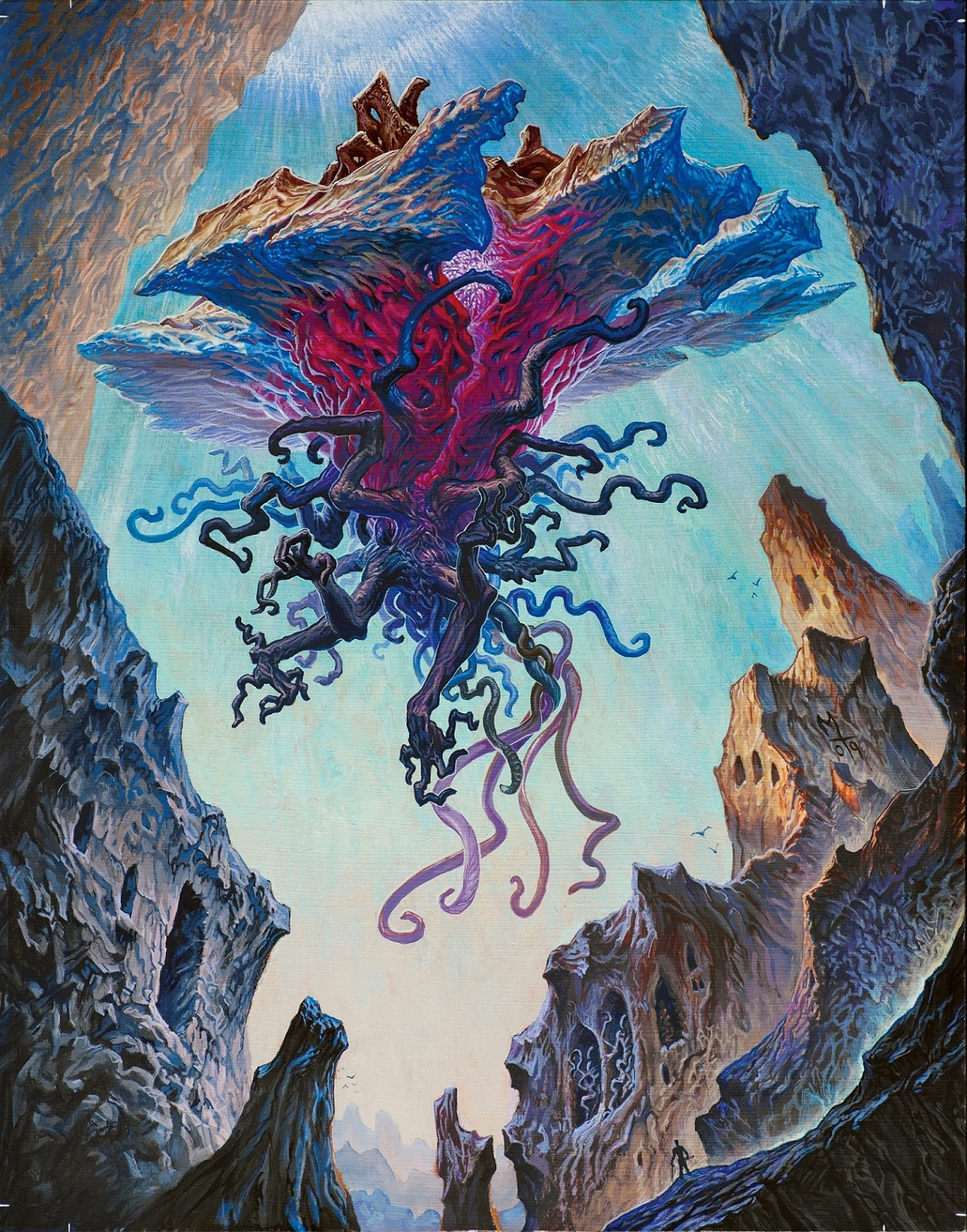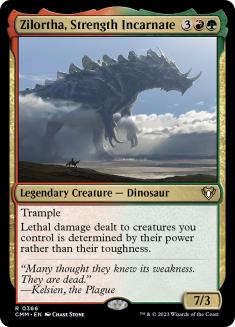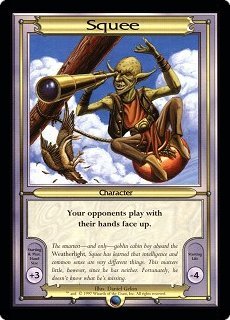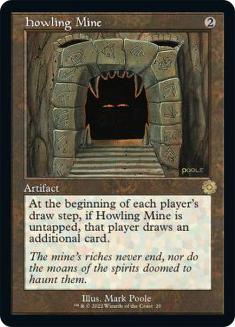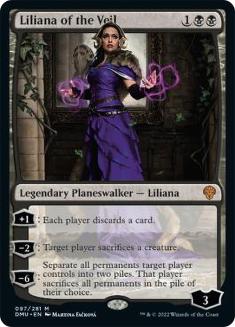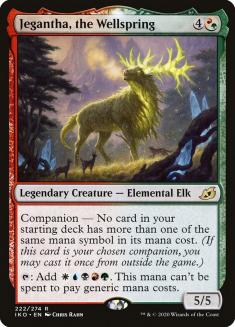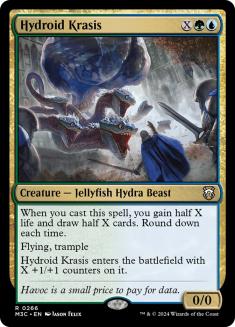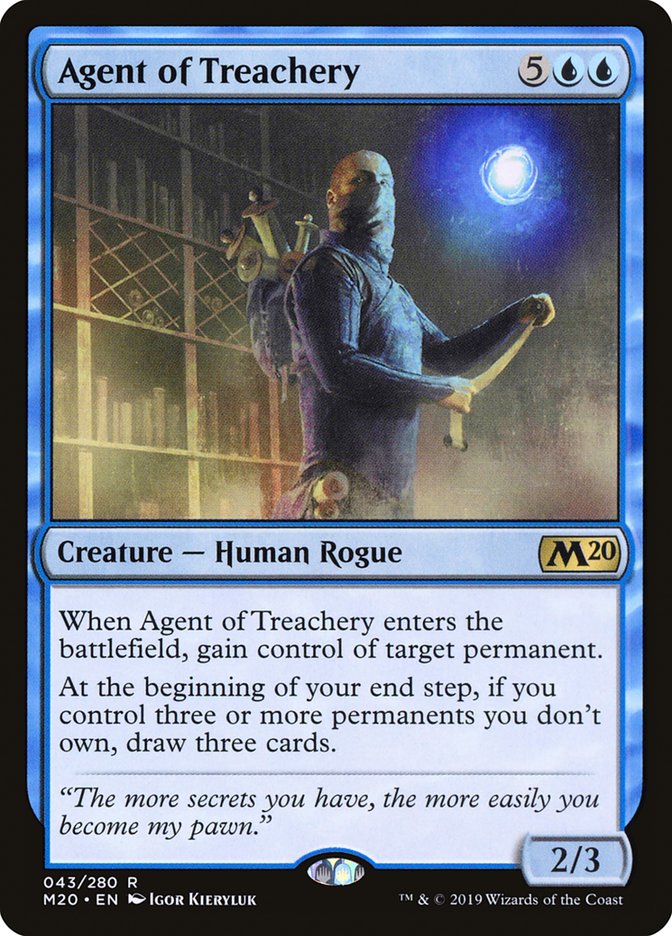Rise of the Eldrazi introduced the term “Battlecruiser Magic.” The idea was that a game of Magic would play out something like a game of Starcraft in which players basically turtle up and focus on their own economy until they can produce a very strong and expensive unit and then attack with that, rather than focusing on early aggression. The idea was to make a limited format where players got to play with awesome huge creatures regularly, so we saw the biggest common creatures ever printed at the time.
When Ikoria: Lair of Behemoths was announced, many players expected a return to this kind of strategy, but that’s not really what we got.
Companions outshine everything else in Ikoria. They’ll be the exclusive legacy of this set no matter what happens at this point. Lukka, Coppercoat Outcast could end up being a multi-format all-star, but the introduction of companions defines this set.
Companions aren’t giant monsters. Not the way Eldrazi are. These cost a very modest three to six mana, they don’t slow the game down, and they don’t make the game revolve around big plays. So what do they do?
I don’t mean what’s the text of a companion card, and I think we’re all ready to move past the “question” of whether we should play them. I think we’re at the point where we’re still processing all the ramifications of these being a part of Magic. Magic has always been played with a seven-card opening hand. We’ve all played games with fewer cards thanks to mulligans, but most of us haven’t played games with larger opening hands.
This means that, as a community, I don’t think we have a great sense of how things change if you start the game with a different number of cards.
Take a format you know pretty well – if you’ve been playing for a long time, ideally some Standard format from a few years ago. Imagine you’re going to play a throwback tournament where we play with those same cards being legal. You’d probably know what deck you’d play. Now, imagine that same scenario, except that in this throwback tournament, everyone will start with a ten-card opening hand and maximum hand size.
Would you change decks? Would you build your deck differently? How confident would you be that your decision is correct? Would you consider this a different format? Would you know what you should do differently to take advantage of this change?
My guess is that different decks will do well and different cards will be good. Cards that draw more cards will be weaker, cheap cards will be stronger, and synergistic cards will be stronger. I’ve never played with this rule, but I am familiar with the difference between big games and small games.
Howling Mine leads to big games. Liliana of the Veil leads to small games. In big games, both players have a lot of resources, while in small games, players have very few resources. Card advantage matters more in small games, whereas tempo and battlefield presence matter more in big games.
What I don’t know is how quickly this scales.
If both players start the game with their entire deck in their hand, “card advantage” in the sense of having extra cards in your hand is completely meaningless. No one ever misses a land drop or runs out of resources, so what matters is spending your mana on higher-impact plays than your opponent spends their mana on.
If both players start the game with half their deck, we have exactly the same situation.
If both players start with zero cards, being the first player to get to three mana to cast a Divination could be a game-winning play. Now you can start making more land drops and casting a spell, sometimes in the same turn, and the more card draw you have in your deck, the more you’ll be able to snowball. It’s a completely different dynamic.
This is to say that opening hand size isn’t something we’ve investigated a lot, but all you need are some loose thought experiments to be pretty sure that, at least at extremes, it fundamentally changes card evaluation and priorities. The question is just how sensitive the game is to small changes in opening hand size.
We now play Magic with eight-card opening hands instead of seven. How much does that change the game? I’m not completely sure of the magnitude of the change yet, but I know that the direction of the change is to make drawing cards less important and to make spending mana to impact the battlefield more important.
Further, I’d argue that Jegantha, the Wellspring is an eighth card in your opening hand. Lurrus of the Dream-Den and Yorion, Sky Nomad are more than that. These cards have a much bigger impact than just drawing a random extra card. These are high-impact cards that offer additional card advantage that you can plan to have access to. They feel more like starting with a nine-card hand to me.
What I’m getting at is that the introduction of companions brings the traditional strategic concept of card advantage to an all-time low in relevance to the outcome of a game of Magic. However, I’d also suggest that this isn’t a new shift in the direction of Magic design.
We’ve seen designs like Hydroid Krasis that make it very unlikely that games ever reach a point where players are in “topdeck mode.” Compared to what we used to see in Magic, it’s much more likely that the game ends while both players still have cards in hand and their plays are constrained by the amount of mana they have until the end of the game. Uro, Titan of Nature’s Wrath was another huge step toward invalidating the concept of card advantage. While Uro’s around, it’s highly unlikely that a game will be determined by a player running out of things to do.
In recent years, players have played way more lands than ever before. If you never run out of things to do anyway and what matters is making the most out of every turn, missing a land drop can easily be a death sentence. And because you have enough things to spend your mana on anyway, it’s easy to play more. We used to worry that we’d simply cast all of our spells and have nothing to spend mana on, but that happens much less these days. That’s one example of how this understanding impacts deck construction.
More fundamentally, it changes what games are about.
In Ikoria Standard in particular, I believe we’re playing haymaker Magic. This is like Battlecruiser Magic except the big plays don’t cost anywhere near as much mana. Thanks to Winota, Joiner of Forces and Lukka, Coppercoat Outcast, most of these haymakers happen to result in Agent of Treachery at the moment, but that’s not the only big play in the format.
A few weeks ago, I wrote about playing The Binding of the Titans with Lurrus of the Dream-Den. This strategy never made waves because it’s just not interacting on the proper axis for Ikoria Standard. It’s about playing small Magic. It builds up resources, but those resources take the form of small creatures and generally trying to win on microtransactions. That kind of play can get trumped by people who just go way over the top with something, or it can get torn apart by Extinction Event.
My biggest weakness as a deckbuilder is that I like building decks that resist interaction. Trying to build an interactive or reactive deck is bad enough, but I go one level further. I like to grind, but I like decks that are internally good at generating value. All of that only matters when value is the axis my opponent chooses to compete on, and opponents, correctly, rarely do that these days.
Reliable isn’t the name of the game. Big is the name of the game. Impactful. Play cards that do things. Things that win the game. Ikoria Standard is about hard-hitting fundamental turns that try to close a game out. In other words, you want to be proactive. That means you have to either go big or go fast. For me, this means I need to learn to think about Ikoria Standard more like how I think about Modern.
In Modern, there are too many strategies that are too good at doing very different things from each other. You can’t answer all of them, so instead you want to just find the deck that does its thing the best.
This is why Lurrus of the Dream-Den was printed.
That sentence probably came as a surprise. What does that have to do with what I’m talking about?
Lurrus is an absurd Magic card, but the current design philosophy is “make it right for Standard.” Lurrus is right for Standard because Lurrus plays small Magic. By definition, it has to work with small cards, and Lurrus is about generating value over time. It wants you to prolong the game so it can get you more cards. All of that is a trap and none of it is what you should be doing in Ikoria Standard. Lurrus is strong enough that it might be playable, but because the axis it works on is so against what’s currently important in Ikoria Standard, it was able to get pushed to the point where it came in at a ridiculous power level in other contexts.
This is also why Obosh, the Preypiercer is able to compete. Obosh is a five-mana creature that doesn’t does do anything if the opponent can kill it right away. It’s nowhere near the power level of the kind of card someone would actually put in their deck in Standard. It doesn’t have to be, since it’s a free extra card, but my point is that the card you get for following the condition is much weaker than Lurrus or Yorion. Obosh sees play partially because its restriction is potentially easier to follow, but also it manages to make it because it’s doing exactly the right thing for a game where players start with more cards. It’s not trying to play a value game. It’s trying to play a fast game and it’s trying to offer a fundamental turn where all your creatures do double damage and the game ends.
If you imagine that we’re playing an old Standard format and you can choose to either start the game with Lurrus in your hand as one of your seven cards or Obosh in your hand as one of your seven cards, and neither had a restriction, this wouldn’t really be a question. Lurrus is much, much stronger. But in a game where both players start with half their deck in their hands? Well, now Lurrus’s ability doesn’t do much and Obosh can end a game, so it’s not so clear.
But again, we don’t have half our decks; we just have one more card. So where is the tipping point? How big does our hand have to be to make us care about the high-impact immediate payoff card over the value-generating card?
To me, the question we need to figure out is exactly how much one extra card changes our understanding of Magic’s fundamentals.
I don’t have a firm answer, but I do know that in the past, Boon of the Wish-Giver would have been an important card in Standard, and now games just aren’t about spending six mana to draw four cards. They’re so not about it that we don’t even want to the option when we can pass on it for a single mana.
Card advantage is dead. Big plays are the order of the day.

